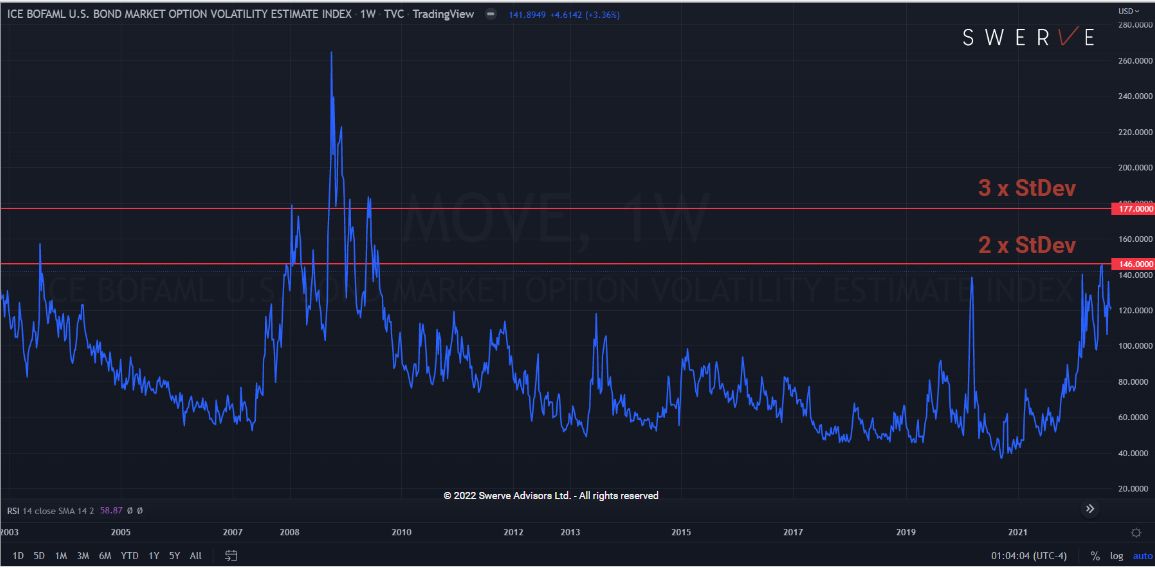How far can the US Federal Reserve go into tightening financial conditions?
“How far can the #usfederalreserve go into tightening financial conditions?” is the key question for global #investors today and there are some signs the inflection point in Fed’s policy may be getting close. As liquidity dries up, the signs of distress are starting to show. The MOVE, the “fear” index for US bonds, has risen to its highest since 2009, signalling distress in the all-important credit market (see weekly chart).
At the current level, the index is at the two standard deviations above its average. A fairly rare instance only recorded approximately 4% of total. An even rarer event is a three standard deviations, a value only recorded 1.5% of the times. Since 2002, there have only been 73 days where the MOVE registered a three standard deviation. A stunning 82% of those readings happened between October and December; it looks like we may be in for an interesting 4th quarter.
Given the amount of debt in the system, should the MOVE shoot up, the risk of a credit event may force the Fed to relinquish and to tilt to “neutral” before #inflation is fully brought under control. The implications for investors are critical as a tilt in Fed’s policy would provide some relief to asset prices and the economy but also entrench inflation for years to come. The Fed may also interven too late or not at all. A very risky policy mistake that could trigger a devastating cascade effect for the global economy.
More importantly perhaps, any change of policy does not meaningfully impact any of the “4 Ds” of the Great Reset: Debt, Deglobalization, Demography and Decarbonization. These forces will continue to drive change for years to come, wreaking havoc on portfolios but also creating generational wealth opportunities for the more cognizant investors.
Disclosure: Hold all assets mentioned. Not investment advice. Do your own research.
